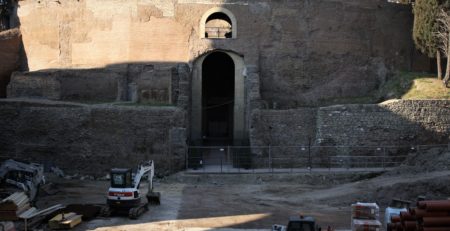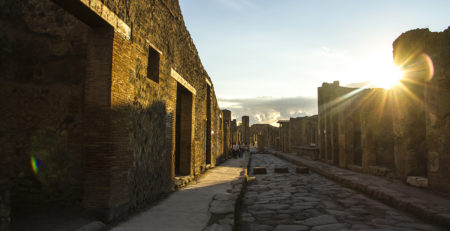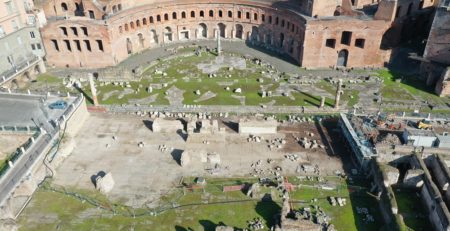Things to do in Rome: The Appian Way


All roads lead to Rome and the Romans were known for their gigantic freeways, one of their many engineering inventions. One such road is the Via Appia, also known as the Appian Way.
Locally known as ‘the Queen of the roads’, it stretches all the way to the harbour of Brindisi. The mega road was originally constructed to connect Rome to Southern Italy and became one of the most important thoroughfares in the Roman Republic. Many people don’t realise that there is a vast national park in the heart of Rome, along this road, which is protected from development as part of the ‘Parco Regionale Appia Antica‘.
The Appian Way Regional Park is 3400 hectares and a protected area established by the Italian region of Lazio. It falls primarily within the territory of Rome but parts also extend to the neighbouring towns of Ciampino and Marino, and it contains 78 species of birds and fauna, as well as flora including Mediterranean pine trees, holm oak and cork, plus many archaeological items of interest such as catacombs, tomb monuments, aqueducts and villas that line it.
There are lots of interesting ruins along the road, as you cycle through history, such as medieval watch towers, catacombs and thermal baths, and this is an ideal nature trail for both walking and cycling, as well as a sense of past steeped in history.
The Caffarella Park (Parco della Caffarella) is one of the parks that make up the entire complex. The park is named after the Caffarelli family who initially owned a farm there in the 16th century. It was later taken over by the Pallavicini family and the Torlonias. In the 1930’s, the land was nearly use for urban expansion, but following popular demand and protest became protected and preserved, incorporated into the Apian Way park. A working farm is still there to this day.
An aqueduct on the via Appia

Part of this stretch was once occupied by a large estate called Tropius, owned by a Greek called Herodes Atticus, who became a Roman Senator. He married Annia Regilla, acquiring the land to the estate dating back to 312 BC.
The Nympheum of Egiria, is a spring which dates back to the 2nd century AD, was constructed by Herodes after he was cleared of the murder of his wife, proved to have been killed by one of his freed slaves. The water springs from the rear of the now headless statue of the God Almo, a personification of of the river Almone.
The Tomb of Annia Regilla

The Tomb of Annia Regilla is a beautiful monument, constructed in red and yellow brick with two floors, also known as the Temple of the God Rediculum (since scholars have debated, if it was built for the god Romans honoured at the beginning and end of their journeys), with its temple like appearance and external decorative features. In the middle ages, this was actually used as a hay loft by a neighbouring farmhouse. The Sacred Wood is a stunning sub section that Herodes ordered to be planted, overlooking the valley, with views of the hills around Rome, known as the Castelli Romani.
The Valca Tower is a 12th to 13th century building made from rectangular blocks of tuft, and was protected by a first wall of defence and a drawbridge, believed to be part of a fulling mill for cleaning cloth and in particular wool.
The Columbarium of Constantine is a building where the ashes of the deceased were kept dating back to the 2nd century AD. This was also converted into a mill during the middle ages.
A Roman cistern exists constructed around 100AD which became exposed during the construction of Circus Maxentius when earth moving was carried out. It was originally underground.
The church of Saint Urbano

The church of Saint Urbano is a 7th-century church built over a pagan temple dating back to the 2nd century, on the edge of the Caffarella Park south east of Rome. In the 10th Century, the structure was modified and consecrated as a church, and internal frescos were added in the 12th century. It was extensively altered yet again in the 17th Century. Left abandoned for years due to its remote position, it was eventually acquired by the city of Rome in 2002 and given to the Diocese of Rome. It underwent restoration between 2010-11, and is open to the public only for special, occasional guided tours.
Some other roads are the Via Postumia and Via Aurelia. Gallia Narbonensis (southern France) was reachable from Rome by way of the Via Postumia in the North of Italy. And, by the time of the high Empire, travellers could go from Rome by way of the Via Aurelia across the Alps on the Via Julia Augusta to either northern France or Gades (modern Cadiz, Spain).
The modern Strada State 1 (State Road 1) occupies the same route, and colloquially is still referred to as, La Via Aurelia. If you love ancient ruins and all things nature, then look no further than our Underground Rome and Appian Way tour.












